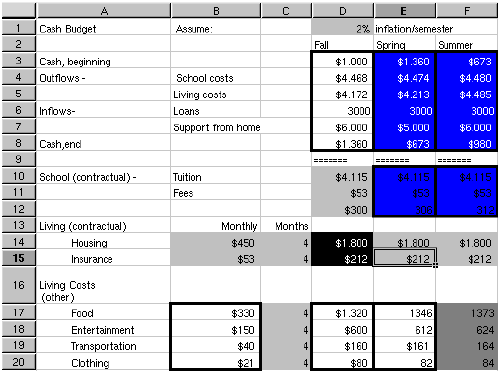Authors
Markus Clermont & Roland Mittermeir
Abstract
Spreadsheets are an important device for computer based decision support. In this capacity, they might reach a level of complexity and show evolutionary patterns similar to conventional software.
However, as end-user devices, they are not subjected to as rigorous a development and maintenance process as professionally written software. Thus, the significance of the decisions they are supporting and their correctness become increasingly divergent. The properties contributing to the success of small scale sheets tend to become a burden with larger sheets.
This paper presents an approach that enables auditors to understand the structure of large spreadsheets by aggregating cells with related properties. It will be shown, how different auditing strategies can be supported by this approach.
Sample

The example spreadsheet is partitioned into semantic units:
- Semantic units are framed with a thick border.
- Semantic units in the same class are shaded in the same gray-scale.
- Semantic units with singleton generators are not shaded at all.
- Not framed cells are in semantic units consisting of single cells.
Publication
2003, 6th International Conference on Information Systems Implementation and Modelling, April, pages 87-97
